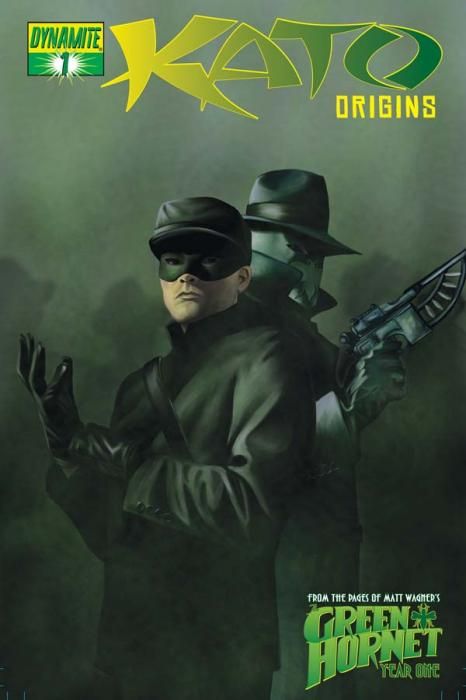The opening issue to "Kato Origins" does an effective job of catering itself to him and his concerns, showing Britt Reid through his eyes somewhat and creating a story that's uniquely tailored to his perspective and experience. With a focus on the idea that Kato is a Japanese man posing as a Korean in 1942 America, Jai Nitz hones in on something that separates Kato from every other sidekick, making him less generic.
Nitz wisely makes Kato the protagonist right away, pushing the Green Hornet to the side as a slightly annoying boss, more concerned with his personal glory than getting the job done. It's a slightly skewed view of the character, but since the story is from Kato's perspective, it makes sense. Kato gets to shine by taking out four mobsters before being enlisted by the police in the murder of a Korean in Chinatown. The problem, of course, is that Kato isn't actually Korean, but can't reveal that. Throw in a racist, dirty cop and there are some nice moments of comedy before the plot really gets going at the end of the issue.
The issue is narrated by Kato throughout as he switches between what's going on at the time and a discussion of gambling with cards in Japan. The narration is well written and paced well, but the gambling element never really pays off despite some efforts by Nitz to connect it to what's going on at the time. It carries the weight of something important, never paying off, which leaves the issue wanting somewhat. Even so, the narration is interesting.
Paired with Nitz is Colton Worley, whose work seems a little schizophrenic, always delivering nice-looking pictures, but in differing styles that seem to shift at a whim. His faces are often very polished with a soft detailing around the edges, but objects shift from that polish to sketchy blocks panel-to-panel. As a result, the environment around the characters shifts too much. Even the characters switch between fluid and soft to sketchy and hard, especially Kato. You don't know how he's going to look on any given page. The opening pages, especially, look polished, but quickly shift to rougher finishes.
A larger problem is that, no matter the look of the characters, their body language is very stiff and stilted. They don't even seem posed, they simply don't look natural, standing in ways that people don't stand. This is less a problem during action scenes, which Worley depicts with a chaotic energy that works nicely.
"Kato Origins" #1 is a good beginning to the series and offers a clear, confident take on the character. The art works best when taken one panel at a time and the narration doesn't come together at the end, but it's engaging and shows promise for the series as a whole.

